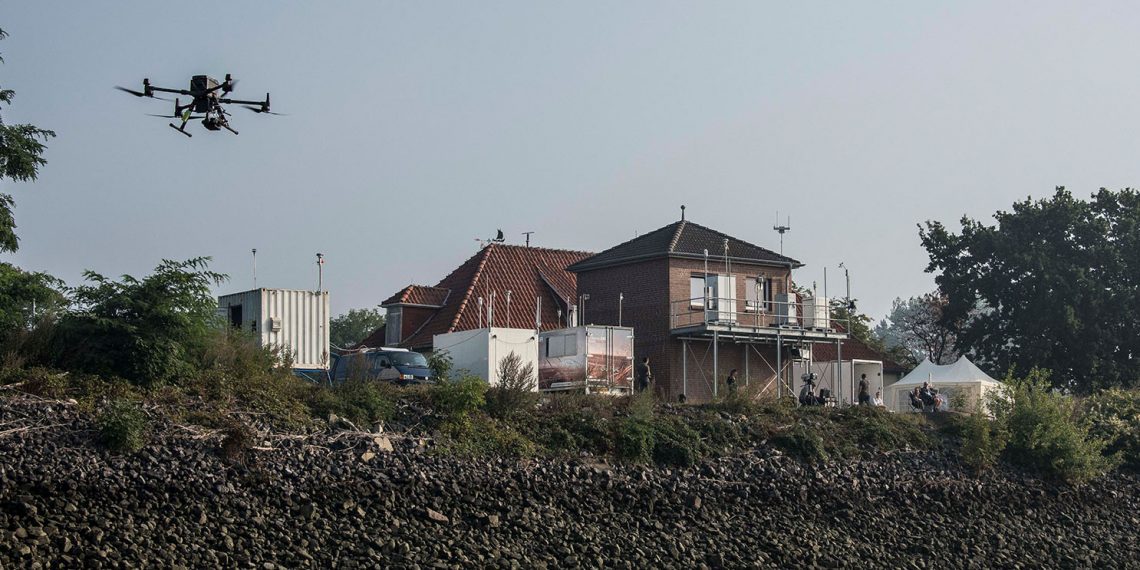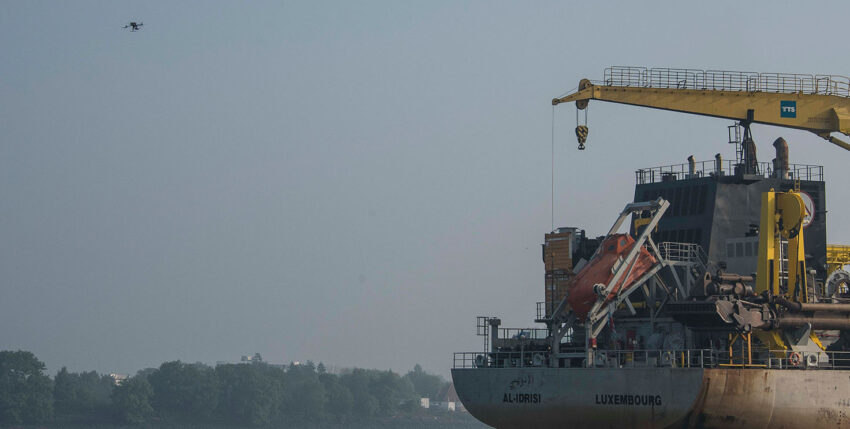The BSH has been measuring the proportion of sulphur in ship emissions since 2014. At the end of 2020, the measuring network consisted of three fixed and one mobile station as well as the new measuring station on the Atair.
The maximum permissible sulphur content in marine fuels has been 0.5 percent worldwide since 1 January 2020. For the North Sea and Baltic Sea as Sulphur emission monitoring area (Sulphur Emission Control Area, SECA), the limit value of 0.1 percent has been in force since 1 January 2015. SECAs are special shipping zones with particularly low sulphur limits set by the International Maritime Organisation (IMO). In addition to protecting coastal residents, the main aim of reducing the sulphur concentration in the atmosphere is to stop further acidification of the oceans. Since 1 January 2021, the North Sea and Baltic Sea have also been Nitrous Oxide Emission Control Areas (NECA), also defined by the IMO.
Monitoring of airborne emissions is becoming increasingly important
In addition to the input of pollutants from the land, airborne inputs into the oceans are increasingly becoming the focus of investigations. A relatively new area of investigation is the impact of Ship emissions to the oceans, which penetrate the seawater via the air.
Back in 2014, the BSH set up a measuring station in Wedel on the River Elbe in collaboration with the University of Bremen as part of the MeSMarT research project funded by the BSH, which measures the proportion of sulphur in the exhaust plume of passing ships. Today, we have a measuring network consisting of three fixed stations. In addition to Wedel, measuring stations, so-called sniffers, measure in Bremerhaven and Kiel. A further measuring station is to be built in Rostock. The BSH has also set up a mobile, land-based measuring station, which has been in trial operation in Wedel since September 2020. In addition to sulphur, the stations also record nitrogen oxides, among other things. A further station will measure ship exhaust gases over the North Sea and Baltic Sea on the new survey, wreck search and research vessel Atair, which is due to enter service in 2021.
The data is collected and automatically analysed. In the event of unauthorised deviations from the limit values in ship exhaust gases, the system sends an email to the waterway police. The ship responsible is identified via the AIS identification system and the weather data. At the nearest possible harbour, the waterway police take fuel samples to verify the measurement results.

Sample measurements of ship exhaust gases on police vessel
From 6 to 11 June 2019, the BSH temporarily installed a ship exhaust gas measuring device (sniffer) on a Federal Police Sea Vessel. The ship was deployed in the area of the Kadet Channel in the German Baltic Sea for normal police work. As part of this operation, it also carried out exhaust gas measurements on ships. It carried out various manoeuvres to test different operational scenarios. The aim of the week-long trial was to find out whether the ships of the Federal Police and their area of responsibility are potentially suitable for Marpol VI monitoring of shipping traffic in the North and Baltic Seas using remote measurement technology, which was confirmed in principle. The BSH and the Federal Police used the sniffer to check a total of around 100 exhaust plumes. This investigation also showed that over 99 per cent of the exhaust plumes examined indicated that fuel was being used in accordance with the regulations.
But sulphur is not the only substance that causes pollution in the maritime environment. For this reason, the BSH is collaborating with 17 other international project partners in the field of atmospheric research and air monitoring as part of the European Union-funded Shipping Contributions to Inland Pollution Push for the Enforcement of Regulations (Scipper) project. The effects of ship exhaust gases on the marine environment, but above all on harbour cities and coastal areas, are being investigated. Of particular interest are Air emissions of sulphur, nitrogen oxide and Particle emissions of the ships. In the case of the latter, it is currently still unclear how the use of alternative fuels will affect the Emission behaviour has an impact. For this reason, the BSH has expanded its measurements at the station in Wedel to include aerosol, i.e. ultra-fine dust measurements.
International comparative measurements with different systems
On the initiative of the BSH, the first international comparative campaign to measure ship exhaust gases took place in Wedel near Hamburg between 7 September and 15 October 2020 together with scientific teams from Sweden, the Netherlands and Denmark as part of the Scipper project.
The emissions of the same ships with different currently available measurement techniques and strategies under the same environmental conditions. The aim is to better harmonise the reporting of conspicuous ships internationally. The BSH and the other project partners used five sniffers, a laser spectrometer, three ultrafine particulate matter measuring devices and differential optical absorption spectroscopy techniques. In addition, two drones were used from 14 to 18 September to fly directly into the exhaust plume of ships over the Elbe and measure the values.
A total of around 900 exhaust plumes from more than 400 different ships were analysed. Of these, two drone-based systems flew into a total of 70 exhaust plumes from 58 different ships and analysed their compositions. The Hamburg Waterway Police also supported the comparative measurement campaign and took 55 fuel samples from 32 selected ships. During the measurement campaign, it became apparent that the ships were predominantly using fuel that complied with the regulations.
In order to be able to better compare the various measurement systems used, artificial exhaust plumes with a known composition were also generated during the measurement campaign. The BSH is making its measurement data available for statistical analyses of existing data as part of this project. In a further step, the internationally collected data will be used to Emission and dispersion modelling further developed and validated.
The BSH uses the knowledge gained in the project to develop tools to ensure compliance with Emission limits can be enforced.
Dr Jörg Beecken is a scientist in the BSH's Scipper project. Dr Andreas Weigelt is a scientist and head of the BSH's ship exhaust gas monitoring network.
Photos: BSH/Thomsen










